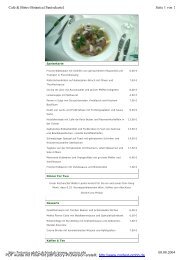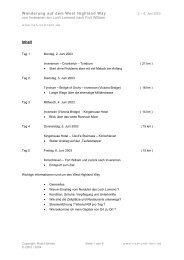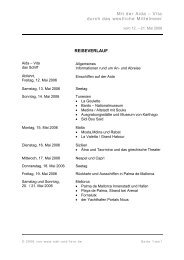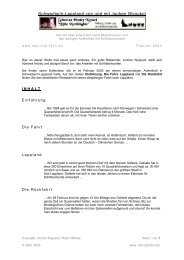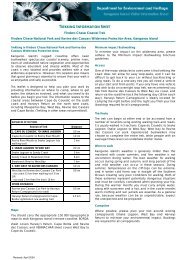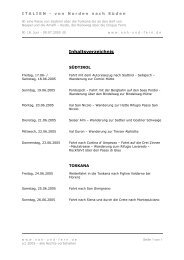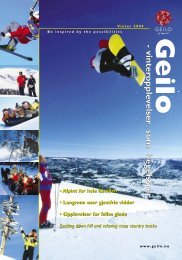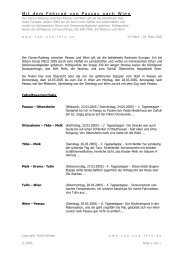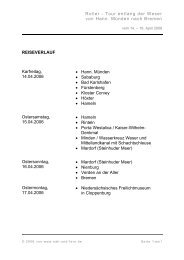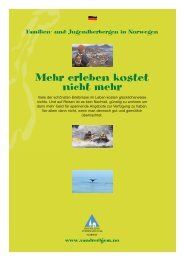Kakadu National Park Visitor Guide and Maps - Free
Kakadu National Park Visitor Guide and Maps - Free
Kakadu National Park Visitor Guide and Maps - Free
Create successful ePaper yourself
Turn your PDF publications into a flip-book with our unique Google optimized e-Paper software.
<strong>Kakadu</strong>, a World Heritage AreaIntroduction to Bininj/Mungguy (Aboriginal) ways<strong>Kakadu</strong> <strong>National</strong> <strong>Park</strong> is one of the few World Heritage Areas that have beenlisted for both their cultural <strong>and</strong> natural heritage. The park protects one of thefinest <strong>and</strong> most extensive collections of rock art in the world, a tangible reminderof Aboriginal people’s long <strong>and</strong> continuing association with the area.<strong>Kakadu</strong> protects examples of most of Australia's Top End habitats, including theentire catchment of a large tropical river, the South Alligator. From this range ofhabitats stems a remarkable abundance <strong>and</strong> variety of plants <strong>and</strong> animals. Manyare rare or not found anywhere else <strong>and</strong> new species continue to be discovered.This World Heritage emblemsymbolises the interdependenceof cultural <strong>and</strong> naturalproperties: the central square isa form created by people <strong>and</strong>the circle represents nature.The two are intimately linked.You can help care for yourself <strong>and</strong> <strong>Kakadu</strong> by following these guidelines:• Walk only on marked tracks.• Avoid damaging Aboriginal rock paintings by staying behind the barriers.• Protect plants <strong>and</strong> do not use tree branches as fly swats.• Do not feed or disturb wildlife.• Light fires only in fireplaces provided.• Use as little firewood as possible or use fuel stoves.• Camp only in designated camping areas.• Drive carefully <strong>and</strong> keep to the roads <strong>and</strong> carparks.• Obey warning signs.6<strong>Kakadu</strong> <strong>National</strong> <strong>Park</strong> is home to many Aboriginal people. As in most cultures,Bininj/Mungguy culture has its own set of social behaviours <strong>and</strong> customs, whichare considered good manners. Please consider these while visiting <strong>Kakadu</strong>.• Religion <strong>and</strong> ceremony are very important parts of Bininj/Mungguylife. Show respect by not entering restricted areas such as sacred sites,ceremonial sites or burial grounds.• Traditionally Bininj/Mungguy do not greet each other everytime they meet. However, most Bininj/Mungguy are used to non-Aboriginal people doing so <strong>and</strong> may expect a ‘hello’.• Many Bininj/Mungguy do not use personal names as freely as non-Aboriginal people do <strong>and</strong> often address each other by kinship terms.• Bininj/Mungguy appreciate privacy. It is good manners not to enterliving areas <strong>and</strong> not to take photographs of Bininj/Mungguy withoutpermission.• Some Bininj/Mungguy find constant eye contact uncomfortable.• In Bininj/Mungguy culture, it is important to pay attention, <strong>and</strong> toconsider your questions carefully.• It is polite to say ‘good bye’ when leaving. In this area the Bininj/Mungguy word for good bye is boh boh (pronounced bor bor).• In Bininj/Mungguy culture, it is often not appropriate to use thenames or display images of deceased people.• Areas may close at short notice for cultural purposes at the requestof traditional owners.Pronouncing Bininj/Mungguy namesUnlike English, the spelling system used to record local Aboriginal languages isvery consistent. So once you have learnt the alphabet, it is quite easy to pronouncewords by sounding them out.The Aboriginal Language <strong>Park</strong> Note details the Gun-djeihmi alphabet. It isavailable from the Bowali <strong>Visitor</strong> Centre. In this guide, English approximations forsome names are given in brackets.7



